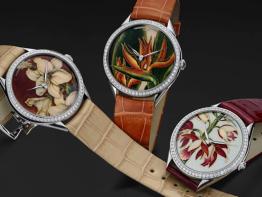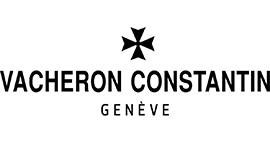If I might explain why by picking up Thornton's story in 1797. It was then that the physician and lecturer in medical botany announced he was going to invest his considerable inheritance in producing a three-volume book with the title of The New Illustration of the Sexual System of Linnaeus.
The tome was to be the finest publication devoted to flowers ever produced and would, he claimed, ‘trace in as perspicacious a manner as possible the philosophical principles of botany… and by faithful and well executed engravings of the several subjects of the investigation… render this curious and interesting inquiry level to everyone's comprehension.'
The final volume of this book was to be called The Temple of Flora, a substantial work made up of 70 folio plates of exotic plants, each depicted against dramatic backdrops and painted by prominent English artists.
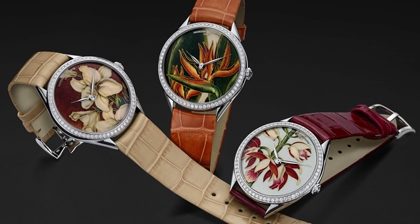
Bloom and bust
On paper, the scale and ambition of the task were massive and looked foolhardy, but Thornton had good reason to believe he could pull it off. The book would be sold to wealthy collectors, and subscribers to the project included George III's wife Queen Charlotte and the Prince and Princess of Wales. Good people to have in your corner when blowing all your cash on a vanity project.
But Thornton's opus quickly ran into financial difficulties. Keen to help the man, admirers in parliament passed an act issuing 20,000 Royal Botanical Lottery tickets in an attempt to stimulate the project.
It didn't work. The Temple of Flora was never finished, and only 33 of the 70 plates were engraved, coloured and stippled, leaving Thornton broken and condemned to live out the remainder of his life penniless (he died in 1837).

Nonetheless, in 1799, what there was of the book was published. Atlas folio in size, it was a magnificent thing to look at, if not to read, filled as it was with bizarre, whimsical poetry that flew in the face of his initial aim to address his subject in plain English.
Fast-forward over 200 years and Thornton's book is revered. Those surviving copies are now worth a pretty penny and on the rare occasion they come to auction sell for six-figure sums. If only the poor fellow knew.
All this in mind, it's quite something to come face-to-face with one of the original, 200-year-old copies, which is on display for one night only in the Marianne North Gallery in the Royal Botanical Gardens at Kew in London. Kew is a UNESCO World Heritage site and also where Vacheron Constantin has decided to launch its latest Métiers d'Art collection to a small gathering of UK press.
By royal appointment only (until now)
There is, of course, good reason for this. Each of the three pieces in the collection, which is called Florilège and has been created exclusively for women, features one of the delicate flowers immortalised in The Temple of Flora on its dial.
Vacheron's UK team has done a sterling job on the location. Marianne North was an astonishing Victorian woman who spent 13 years of her life trotting the globe satisfying her botanical wanderlust. Ms North recorded her findings in a sweeping series of paintings, 832 of which line the walls of the gallery she financed herself and which is named after her. According to Kew, it's the only permanent collection devoted to a female artist in the country.
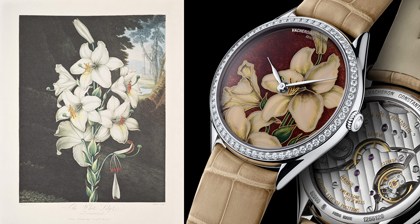
On top of that, we have the place to ourselves – Vacheron has been accorded the privilege of holding the first ever private, corporate event held in the building since its opening in 1882. Until now, the only diners here have been royal. It makes you straighten your tie on hearing that, I can tell you.
The Florilège collection will never look more at home than it does in these surroundings. Take the ‘Queen watch', which depicts the South African orange-flowered plant ‘strelitzia', which was named in honour of Queen Charlotte, the daughter of a South African duke, and brought to Kew in 1773.
No longer a thorn in his side
The ‘White Lily' and ‘China Limodoron' models complete the set, which will run to 75 pieces in total – 20 of each with round diamonds set into the bezel (£90,700/€93,500), and a further five of each set with baguette-cut diamonds that will only be available through the brand's boutiques (£111,500/€115,000), one of which opens in London this summer.
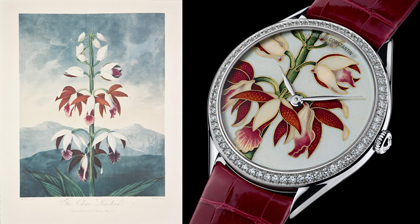
Vacheron's in-house craftsmen looked after the guilloche and gem-setting processes involved in the watches, while superstar enameller Anita Porchet was brought in to oversee the Grand Feu cloisonné enamelling (check out Miguel Seabra's piece for the technical details, posted on World Tempus earlier this week).
Now, I'm English, and therefore predisposed to glorying heroic failures like Thornton, but whether that's the reason or not, I'm quite comfortable saying that of all Vacheron's Métiers d'Art collections to date, Florilège is the one I find most diverting. But more than that, I've a strong feeling it might also ease some of Thornton's disappointment if he could see it – which is the least the fellow deserves.
